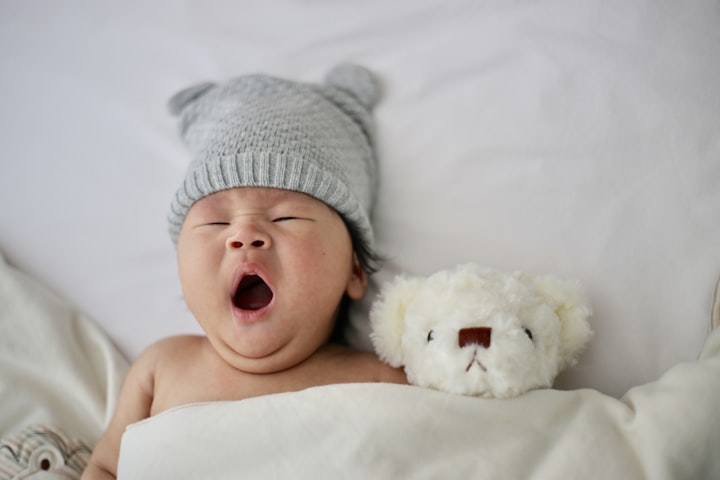Perfect the Basics
And everything else will fall in place

Life is complicated, or so we're told. Think back to a time you really pressed a parent or teacher for answers. When they could no longer explain something, be it how you came to be or how life in general began, they usually offer a version of, 'it's complicated'.
While I dare not say this explanation is incorrect, and reserve the right to use it as a parent myself, I will say this; within the most complex structures and systems in our universe, there arises levels of simplicity. A foundation we can build from. When we understand the basics, everything else falls in place.
Circa Diem
Living things, on our planet anyway, have so much in common. The vast majority of organisms share a cycle centered around a twenty-four hour time period. This cycle, commonly called circadian rhythm, comes from the latin phrase “circa diem” translating to “around a day".
Variations and changes throughout this twenty-four hour cycle, in the form of sunlight and biological factors, determines our level of alertness, hunger, and fatigue. This process occurs from the tiniest insects, various plants, to the largest mammals on earth; including us humans. Like clockwork, certain things in our bodies happen at specific times, day in, day out, thanks in large part to our circadian rhythm.
These peaks and valleys, whether it's biology or body temperature, tuned to that cycle of sun rise and nightfall are all working to help you fall asleep and most importantly, stay asleep.
Sleep, more importantly, good sleep, is crucial for health and well being. It's our base to build from, our foundation. By understanding a few basic bodily functions, including hormones and core temperature, how they relate to circadian rhythms, we can all improve our sleep.
One: temperature
One path to better sleep, has to do with understanding body temperature.
Body temperature starts to fall right before we fall asleep. Throughout the day, our body temperature also fluctuates. Not by much, around 1-2 degrees Fahrenheit. While we sleep, our core temperature remains at it's lowest point in our circadian rhythm. Body temperature is typically lowest around 4am, begins rising to a peak at about 6pm, then starts to fall.
For those having trouble falling asleep, dropping your house temperature an hour before bed, can help. Sleeping in a slightly cooler room will help you fall asleep faster and just as importantly, stay asleep longer.
Two: hormones
Just as a change in body temperature helps wake us in the morning and prepare us for sleep in the evening, so too does an increase in levels of two hormones; cortisol and melatonin.
Early in the morning, cortisol levels rise to wake us from sleep, while natural peaks in melatonin help us stay asleep.
We help our body, naturally, improve how these two hormones work, and help improve our sleep.
First and foremost, avoid drinking caffeine close to bedtime. Not only is caffeine a stimulant, it increase levels of cortisol and decreases melatonin. Another type of drink to avoid close to bedtime is one with alcohol, which also suppresses our melatonin levels. In general, I stop drinking anything (including water) 2 hours before bed. I avoid coffee after 3pm; for those who enjoy the occasional glass of wine, keep it close to dinner.
Of course we can't talk sleep-wake cycles without the life giver itself, our star amongst stars, the sun!
Three: darkness and light
Light exposure is the most important outside factor keeping our circadian rhythm in sync with the twenty-four hour cycle. As a general rule; you would like to have as much (safe) light exposure — preferably sunlight — during wakeful periods and as little light as possible close to bedtime.
Anyone who's had to wake up at night, turn a light on to see, understands how disruptive this can be. It's no surprise, before modern technology, our ancestors would rise with the sun, and sleep under the dim light of distant stars. Exposing your eyes to bright light is one way to wake up.
By contrast, avoiding light close to bedtime helps prepare our body for sleep. It's best to keep your bedroom as dark as possible, and place any distracting devices, like phones, in another room. Ideally, you would gradually dim the light in your environment, mimicking sunset, to optimize sleep. Bright light from above will be more disruptive than ambient lights close to the ground.
I can attest to the effectiveness of light exposure based on a three day power outage we experienced in Michigan this past summer. During those three days, my environment became darker earlier, and I fell asleep quicker. Since our windows remained open, we received more light exposure sooner, and for the first time in a long time, I woke up without an alarm. Falling room temperature in the evening and at night also helped me stay asleep. I likely slept in much the same way our ancestors did. Only I did so atop the comfort of a modern mattress and pillows.
Four: a good foundation
Now might be a good time to tell you I'm a chiropractor. Having worked in the health and wellness space for two decades now, I'm always asked; what's the best position to sleep in, should my mattress be soft or firm, do I need a special pillow? Flat on your back, firm, and not necessarily.
Let's break some of those answers down.
Personally, I do my best to sleep flat on my back, sometimes I'll end up on one side or the other. Thankfully, I never sleep on my stomach, which is by far the least optimal position to sleep in. When you sleep on your stomach, your head is completely rotated to one side, this stresses muscles in the neck and upper back, not ideal for relaxation.
Sleeping on a firm memory foam or hybrid mattress allows your spine to decompress from all the standing, sitting, and the overall forces of gravity pulling you down during the day. You should be a little taller when you wake up in the morning (up to an inch) from your spinal discs reabsorbing fluid and expanding.
When it comes to pillows, use one (not two or three) but make sure it keeps your head in a neutral position so your chin is in line with your sternum. I prefer a moderately firm foam pillow as well.
Putting it all together
If you followed the earlier steps involving hormones, temperature, and light, you should be able to enjoy restful sleep.
For those who are a little overwhelmed, here's a simplified recap.
1) Sleep in a slightly cooler room than you're used to
2) Avoid caffeine after 3pm; if you drink alcohol, do so in moderation, with dinner and avoid all fluids 2-3 hours before bed.
3) Avoid bright light close to bedtime; get as much (safe) natural light as possible during the day
4) Sleep on your back, use 1 pillow, and avoid stomach sleeping.
And there you have it; four, relatively simple resolutions for better sleep.
I hope this article provided real answers. I could have just told you, 'Getting good sleep is complicated' but it isn't, provided you understand the mechanisms your body goes through during a 24 hour cycle.
As a healthcare provider, I always make sure my patients are getting proper sleep and rest before moving on to other ways to improve their health. All of this to say; before considering the ideal diet, best way to exercise, nutritional supplements, or ergonomics, make sure you're getting enough, good sleep.
Sleep is the foundation for good health. It's the base level, we perfect that first, and build from there.
And by perfecting the basics, everything else starts to fall in line.
Including a healthy spine.
About the Creator
Bashar Salame
Chiropractor/Nutritionist/Published Author/Triathlete
Restoring health→ Enhancing Life
Beirut Born→ Detroit Bred
https://twitter.com/Detroitchiro
https://basharsalame.medium.com/






Comments
There are no comments for this story
Be the first to respond and start the conversation.